Boloria
Clossiana currently viewed as a subgenus of Boloria, Proclossiana currently viewed as a subgenus of Boloria
Thomas Simonsen, Niklas Wahlberg, and Andrew V. Z. Brower


This tree diagram shows the relationships between several groups of organisms.
The root of the current tree connects the organisms featured in this tree to their containing group and the rest of the Tree of Life. The basal branching point in the tree represents the ancestor of the other groups in the tree. This ancestor diversified over time into several descendent subgroups, which are represented as internal nodes and terminal taxa to the right.

You can click on the root to travel down the Tree of Life all the way to the root of all Life, and you can click on the names of descendent subgroups to travel up the Tree of Life all the way to individual species.
For more information on ToL tree formatting, please see Interpreting the Tree or Classification. To learn more about phylogenetic trees, please visit our Phylogenetic Biology pages.
close boxIntroduction
A holarctic genus. Many species are boreal or montane, with disjunct distributions on isolated mountain ranges. The phylogenetic hypothesis shown is based the combined analysis of DNA sequences and morphology illustrated in Fig. 5 of Simonsen et al. (2010). NB: this is a Bayesian tree.Characteristics
Putative autapomorphies for Boloria include (Simonsen 2005, 2006):- Uncus bifid
- Dorsal wall of bursa ostium/antrum raised vertically with a sclerotized, arched plate just posterior to the insertion of ductus seminalis
- Bursa ostium/antrum with sclerotized ventral plates
Putative synapomorphies for the subgenus Boloria and B. (Proclossiana) eunomia include (Simonsen 2005):
- Setae on uncus oriented towards the base of uncus
- Uncus with pronounced ventral ridges
- Distal margin of male valve clearly concave
Putative autapomorphies for the subgenus Boloria include (Simonsen 2005, 2006):
- Phallus with two posterior, dorso-lateral areas with strongly sclerotized microtrichia
- Each half of the male juxta in dorsal view outwards pointed spatulate with convex inner margin
Putative autapomorphies for subgenus Clossiana include (Simonsen 2005, 2006):
- A pronounced dent present dorsally where uncus and tegumen join
- A large, membranous centro-diagonal area present on the inner surface of the male valve
- Female abdominal venter 8 with two large, weakly sclerotized, scale covered latero-posterior areas
References
Pelham, J.P. 2008. A catalogue of the butterflies of the United States and Canada with a complete bibliography of the descriptive and systematic literature. Journal of Research on the Lepidoptera 40: xiii + 1-658.
Simonsen, T. J. 2005. Boloria phylogeny (Lepidoptera: Nymphalidae): tentatively reconstructed on the basis of male and female genitalic morphology. Systematic Entomology 30:653-665.
Simonsen, T. J. 2006. Fritillary phylogeny, classification and larval hostplants: reconstructed mainly on the basis of male and female genitalic morphology (Lepidoptera: Nymphalidae: Argynnini). Biological Journal of the Linnean Society 89: 627-673.
Simonsen, T. J., N. Wahlberg, A. V. Z. Brower, and R. de Jong. 2006. Morphology, molecules and Fritillaries: approaching a stable phylogeny for Argynnini (Lepidoptera: Nymphalidae). Insect Systematics & Evolution 37: 405-418.
Simonsen, T.J., Wahlberg, N., Warren, A.D.,Sperling, F.A.H. 2010. The evolutionary history of Boloria (Lepidoptera: Nymphalidae): phylogeny, zoogeography and larval-foodplant relationships. Systematics and Biodiversity 8: 513-529.
Title Illustrations

| Scientific Name | Boloria euphrosyne |
|---|---|
| Location | Gait Barrows NNR Lancashire, UK |
| Specimen Condition | Live Specimen |
| Source | Pearl-bordered Fritillary Bolaria euphrosyne |
| Source Collection | Flickr |
| Image Use |
 This media file is licensed under the Creative Commons Attribution-NonCommercial-NoDerivs License - Version 2.0. This media file is licensed under the Creative Commons Attribution-NonCommercial-NoDerivs License - Version 2.0.
|
| Copyright | © 2007 Graham |
| Scientific Name | Boloria selene |
|---|---|
| Location | Switzerland |
| Specimen Condition | Live Specimen |
| Source | Le Petit collier argenté-Clossiana selene |
| Source Collection | Flickr |
| Image Use |
 This media file is licensed under the Creative Commons Attribution-NonCommercial-ShareAlike License - Version 2.0. This media file is licensed under the Creative Commons Attribution-NonCommercial-ShareAlike License - Version 2.0.
|
| Copyright | © 2008 Luciano Giussani |
| Scientific Name | Boloria napaea |
|---|---|
| Location | NW Russia |
| Specimen Condition | Dead Specimen |
| Identified By | Niklas Wahlberg |
| Image Use |
 This media file is licensed under the Creative Commons Attribution-NonCommercial License - Version 3.0. This media file is licensed under the Creative Commons Attribution-NonCommercial License - Version 3.0.
|
| Copyright |
© Niklas Wahlberg

|
About This Page
Thomas Simonsen

University of Alberta, Edmonton, Alberta, Canada
Niklas Wahlberg

University of Turku, Finland
Andrew V. Z. Brower

Middle Tennessee State University, Murfreesboro, Tennessee, USA
Correspondence regarding this page should be directed to Thomas Simonsen at
Thomas.simonsen@ualberta.ca
, Niklas Wahlberg at
niklas.wahlberg@utu.fi
, and Andrew V. Z. Brower at
abrower@mtsu.edu
Page copyright © 2011 Thomas Simonsen, Niklas Wahlberg, and Andrew V. Z. Brower
All Rights Reserved.
- First online 04 October 2006
- Content changed 20 March 2011
Citing this page:
Simonsen, Thomas, Niklas Wahlberg, and Andrew V. Z. Brower. 2011. Boloria . Clossiana currently viewed as a subgenus of Boloria, Proclossiana currently viewed as a subgenus of Boloria. Version 20 March 2011 (under construction). http://tolweb.org/Boloria/70413/2011.03.20 in The Tree of Life Web Project, http://tolweb.org/




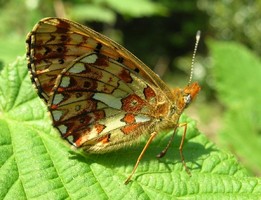
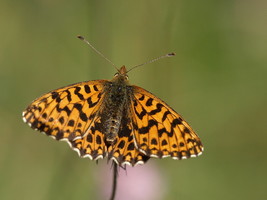
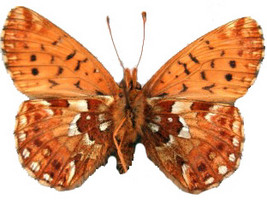
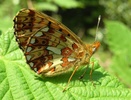

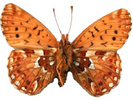

 Go to quick links
Go to quick search
Go to navigation for this section of the ToL site
Go to detailed links for the ToL site
Go to quick links
Go to quick search
Go to navigation for this section of the ToL site
Go to detailed links for the ToL site